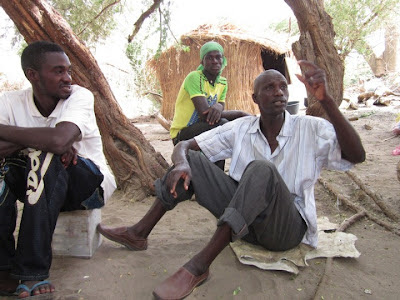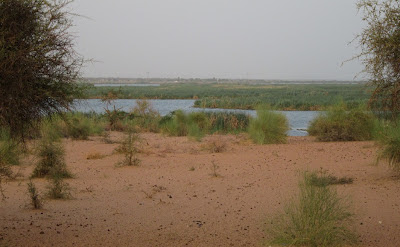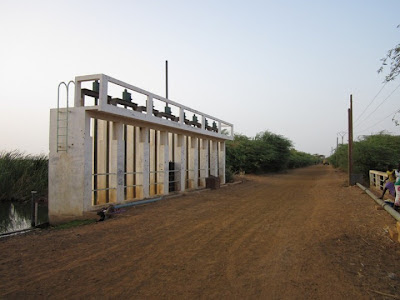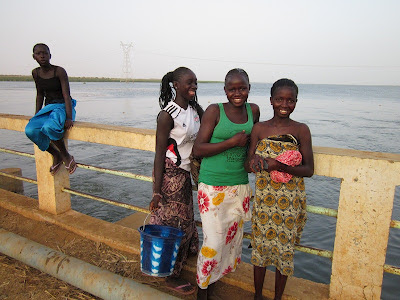Eastern Lac de Guiers
For the last part of our eastern Senegal trip, we were determined to drive down the eastern side of Lac de Guiers, which we had started when our car originally broke down several weeks ago. Our plan was drive back to Richard-Toll to meet Niaga, our friend from Toleu village, since he knew the eastern side of the lake well. But as we rolled back into Richard-Toll, the car died on us again. It turned out that all the bumping across the desert had loosened the battery connections, and also the battery had gotten so hot in the insane 114 F degree heat (45 degrees C) that it had boiled over, and battery acid had spilled out! So we needed a new battery. Luckily the car’s owner agreed to reimburse us, the new battery was purchased and we prepared to drive down the eastern side of Lac de Guiers the next day.
As I’ve mentioned before, Lac de Guiers is a long skinny lake that flows from the Senegal River, whose water levels used to seasonally fluctuate before dams were installed at its northern and southern ends in the 1970’s. Lac de Guiers is the drinking water supply for Dakar and is also used for sugar cane fields at the north end of the lake, so now the water is kept high year round, which has changed the system dramatically for both humans and wildlife. Niaga told me that before the lake was dammed, in 1972 he remembers a severe drought that almost dried up the entire lake. Lots of dead manatees were seen and eventually the sugar cane company dug a channel to the southern end of the lake to get water for their fields. Manatees also used the channel to escape back to the Senegal River.
Now that the water is always high, it has flooded areas around the lake that used to be dry. One known impact is that it has reduced the nesting habitat for the endemic Adanson’s mud turtle (this is the only place it occurs in Senegal) which my husband Tomas has been studying here for many years. As we drove down the eastern shore of the lake, the first village we stopped at was Temey. Here we saw dead trees at the waterline that died as a result of flooding. It reminded me of dead trees we also saw in Ghana as a result of damming to create Lake Volta. The lake is so wide here you can’t see the opposite shore.
At Temey the water is rough, creating small waves, and the locals say this is the norm due to water rushing in at the top of the lake via the Taouey canal from the Senegal River. Despite seeing some aquatic plants, locals told me manatees aren’t seen here much and they don’t stick around, because the water is too rough. While I’m sure manatees can handle some small waves, I can agree that they might choose calmer places with more vegetation when they have the opportunity.
Each village we stopped at had a separate area where fishermen live, so we went to those areas to talk about manatees. At one village the chief admitted that they eat manatees when they are incidentally caught in fishing nets, and they had also found a naturally dead carcass near the village a few months ago (unfortunately they said it was not still there). Niaga (below on right) spoke to the villagers about their community-based conservation initiative at Tooc Tocc Reserve and the importance of protecting manatees to the ecosystem. People really responded positively when they heard Niaga because he’s from the lake and understands their lives.
At the southern end the lake narrowed and was filled with islands covered with reeds, which looked like great manatee habitat. Fishermen here said they do see them, and that they continue out the south end of the lake into the river that flows in to the Ferlo (desert).
At the very south end of the lake we found another dam near the water company pumping station. Manatees swim through these doors when they are open to access the river and other feeding areas to the south. We didn’t hear any reports of manatees becoming trapped on the other side when the doors are closed.
Dam doors are only about 4 feet wide….
Water flowing south into the desert












No Comments